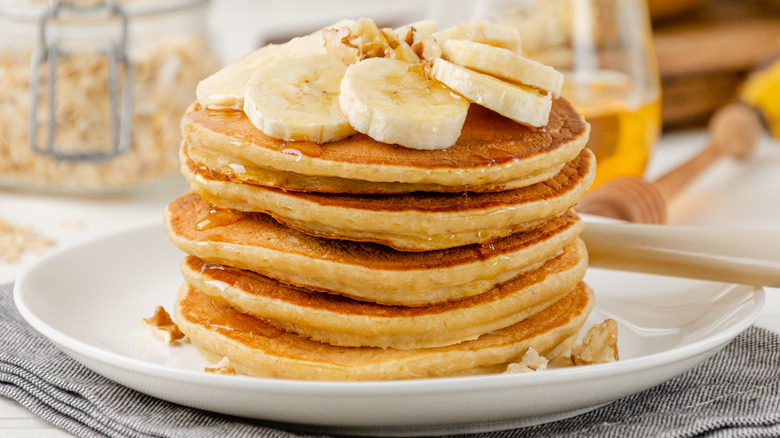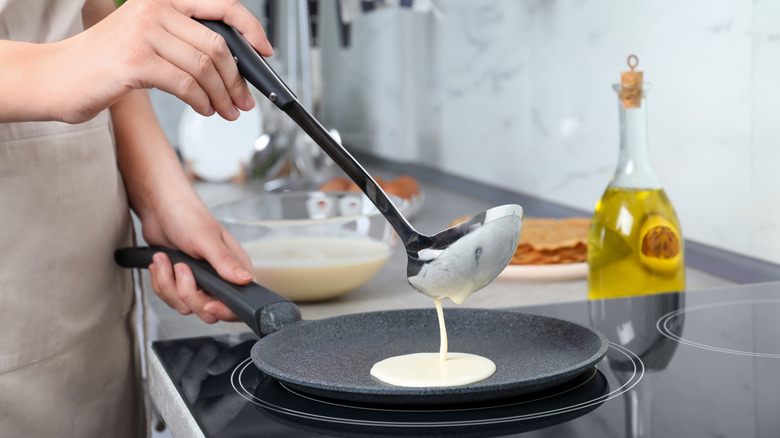Is It Okay To Leave Lumps In Your Pancake Batter?
There's nothing quite as disappointing as cutting into a beautiful stack of maple syrup covered pancakes only to find out they're not nearly as fluffy on the inside as you had hoped. While it's true that the consistency of the batter is to blame, it's probably not in the way you'd expect. Most people strive for an ultra smooth batter, but one that's the exact opposite may actually more ideal.
Pancakes are one of the easiest breakfast foods to make, but perfecting your griddle cakes can take some time. While there are specialty pancake recipes like cannoli pancakes that can make your stacks tasty, you'll first want to perfect regular buttermilk pancakes. If you have an issue with your pancakes being flat, your problem most likely stems from your batter. My Recipes states that your issue may be with having too much liquid in your batter if your pancakes are flat. When mixing together your batter, you may be tempted to get rid of your lumps by adding in more wet ingredients. However, lumps are not your enemy.
A batter with no lumps is an overmixed batter
Whereas lumps are a no for cupcakes and cheesecakes, they're actually a good thing in pancakes. According to America's Test Kitchen, lumps play a major role in making pancakes thick and fluffy. The lumps allow the batter to remain viscous rather than runny, and that's exactly what you want, because a runny batter will spread out too much while cooking, ultimately leaving you with pancakes that are flat and lifeless. The lumps also trap in the air bubbles, and the more air bubbles there are, the taller and fluffier the pancakes will be.
If your pancake batter is lump-free, don't expect to get IHOP quality pancakes out of it. As Eat This, Not That shares, when you try to get rid of all the lumps, you end up overmixing the batter in the process. Flour is the main ingredient in most pancake recipes, and flour contains gluten. The more you overmix the flour, the more gluten gets developed, and when that happens, the texture of the pancake changes — but not in a good way. Instead of fluffy pancakes, you'll end up with gummy ones.
A trick for fluffier pancakes is to gently fold the ingredients together rather than mixing them. You want to make sure everything is combined, but not so thoroughly that there are no lumps left. To avoid any pockets of flour, America's Test Kitchen recommends letting the batter rest for 10 minutes. In the case that some of the lumps do contain dry flour, the 10 minute resting period will moisten them up, and those lumps will turn into a fluffy pancake when you cook them.

